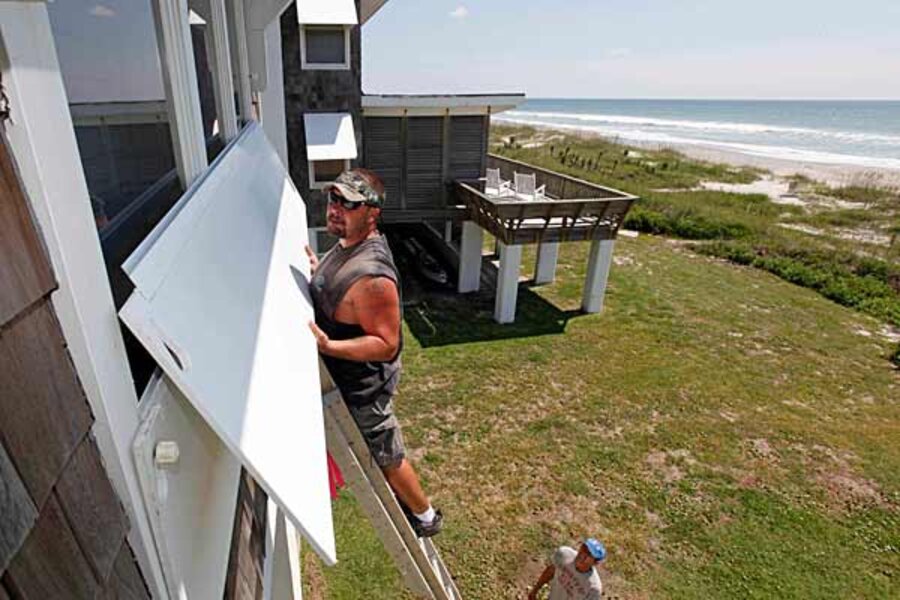Hurricane Earl cooking secrets: what to eat if you're without power
Loading...
Here's a scenario some people are dealing with this week: Hurricane Earl is bearing down. You've been told you don't need to evacuate, but you could be without power for a couple of days, maybe longer. Your windows are boarded. Your flashlights and portable radios sport fresh batteries. Your yard is cleared of potential wind-launched projectiles.
But what sort of food have you squirreled away?
That's a question that ate at Marcia Magnus after watching people grab food from grocery-store shelves in advance of one of five tropical cyclones that hit Florida in 2004.
"People were getting as much canned meat as they could find – Spam, sausage, corned beef," says the assistant professor of dietetics and nutrition at Florida International University in Miami, Fla., and a consultant to UNICEF. "That's the worst thing you can do."
Shoppers cleared out the meats section of the canned-goods aisle while virtually ignoring shelves holding canned vegetables, as well as canned and dried beans and peas – to say nothing of the fresh fruit, vegetables, and whole-grain products still available.
The outcome of that experience: "The Healthy Hurricane/Disaster Cookbook," an 18-page set of tips for gathering and storing food in advance of a storm, as well as several pages of recipes that take no electricity to prepare.
Out are foods heavy in fat, salt, and sugar. In are crab dip, shrimp cole slaw, or cashew chicken-salad sandwiches. Breakfasts? Try oatmeal laced with raisins, dried apricots, and cranberry sauce, and moistened with low-fat soy milk.
Just be sure to have a hand-operated can opener at the ready.
The challenge, Dr. Magnus says, is that "under post-disaster conditions, everybody is at maximum anxiety levels. If there isn't physical loss, there often is emotional loss. What we tend to do when we have emotional loss is find comfort in food. And we don't usually find it in vegetables."
Yet it's at these times of high anxiety that it's most important to take in the nutrients a human needs to function well, "and not just the tastes that you want," she says.
To give people a blueprint for dining with Earl or any other uninvited tropically cyclonic guest, Magnus enlisted the help of 16 students in one of her 2004 public-health courses to develop and test the recipes, as well as compile a pre-storm culinary to-do list.
Among the preparation tips: Store drinking water in plastic jugs (1 gallon a day per person), then store them in the freezer so they can help keep the freezer section chilled if the power fails. Any water for cooking is in addition to this drinking-water supply.
By all means buy perishable fruit and vegetables, but buy the least ripe fruit. And rinse and refrigerate both before the power fails. After rinsing, wrap vegetables in paper towels before putting them in the refrigerator to absorb any remaining moisture.
Indeed, pack the fridge and freezer with as much food as is practical, she advises. The more refrigerators contain, the colder their contents will remain for longer periods of time after the electricity fails.
Pick up whole-grain breads of various kinds and store them in the fridge as well.
For the whole hurricane-cooking enchilada, you can download the cookbook here.
And if you don't live in hurricane country? The tips can readily be applied to any disaster-preparedness effort, Mangus says. The Healthy Hurricane Cook Book isn't just for hurricanes anymore.





